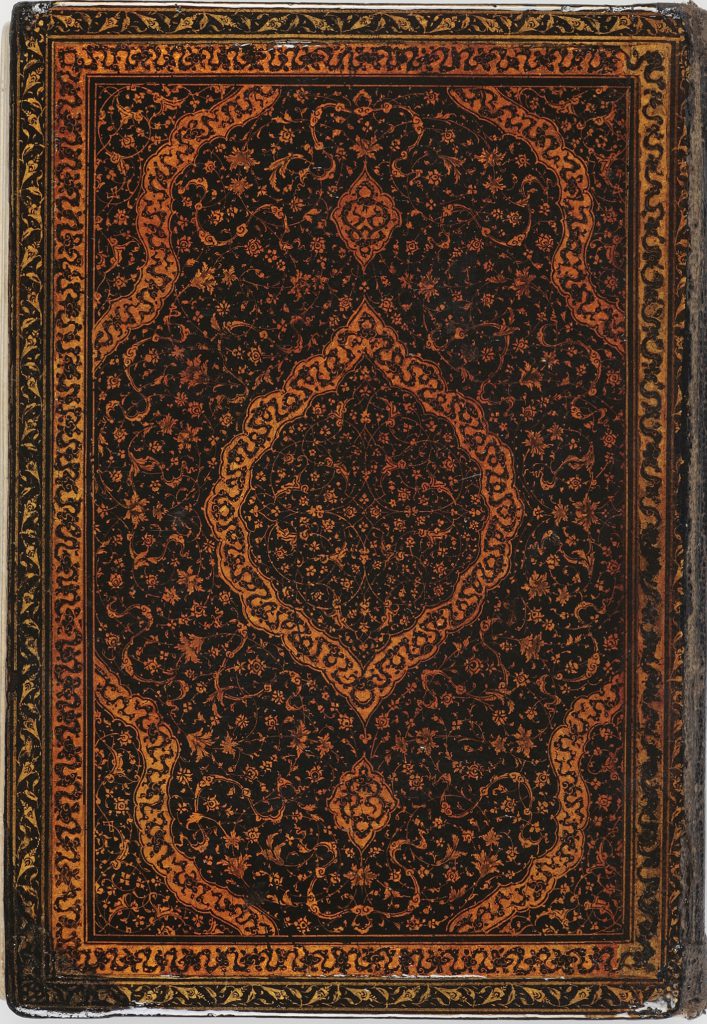



Title: Single-volume Qur’an
Date: 1480–1500
Location: Herat, Afghanistan
Materials: ink, gold and opaque watercolour on paper; bound in contemporary lacquer-painted covers; doublures of painted leather with with filigree medallions
Dimensions: 240 folios; 17.5 x 11.7cm
Accession Number: QUR 323
Other Notes:
The lacquer-painted covers of this Qu’ran are among the earliest and most important surviving specimens of bookbinder’s lacquer. The border, central medallion and cornerpieces are outlined with gold bands decorated with a repeating Chinese cloud design in black, and the motif recurs in the pendants. The main field bears a pattern of Chinese cloud bands overlying a scroll of feathery lotus blossoms, which itself overlies a ground of floral scrolls. The medallion and cornerpieces are filled with a split-palmette scroll over a ground of floral scrolls. A virtually identical binding is attached to a copy of the Mathnavi by Jalal al-Din Rumi, dated 1483 (Museum of Turkish and Islamic Arts, Istanbul, MS 1905).
The manuscript opens with two illuminated spreads, the first of which has medallions with surah al-Waqi‘ah, verses 77–80, while the second has the verses of surah al-Fatihah and the opening verses of surah al-Baqarah. The black floral cartouches that surround the text are repeated almost exactly on the doublures.
Script:
main text in naskh script, incidentals in riqa‘ and Kufic; 15 lines to the page
Bibliography:
– D. James, After Timur. Qur’ans of the 15th and 16th Centuries, The Nasser D. Khalili Collection of Islamic Art, volume III, London 1992, cat.30, pp.114 and 116–7.
– N.D. Khalili, B.W. Robinson & T. Stanley, Lacquer of the Islamic Lands, The Nasser D. Khalili Collection of Islamic Art, volume XXII, Part One, London 1996, cat.1, p.22.
– J.M. Rogers, The Arts of Islam. Masterpieces from the Khalili Collection, London 2010, cat.174, p.150.
Zoom
Close

Create your own collection of artworks that you can print or save as a PDF. Please enter you email to enable feature.
Small Flask | JLY 1075
Has been added to your collection.
TIP:
You can now access and view your collection from the main menu at any time.